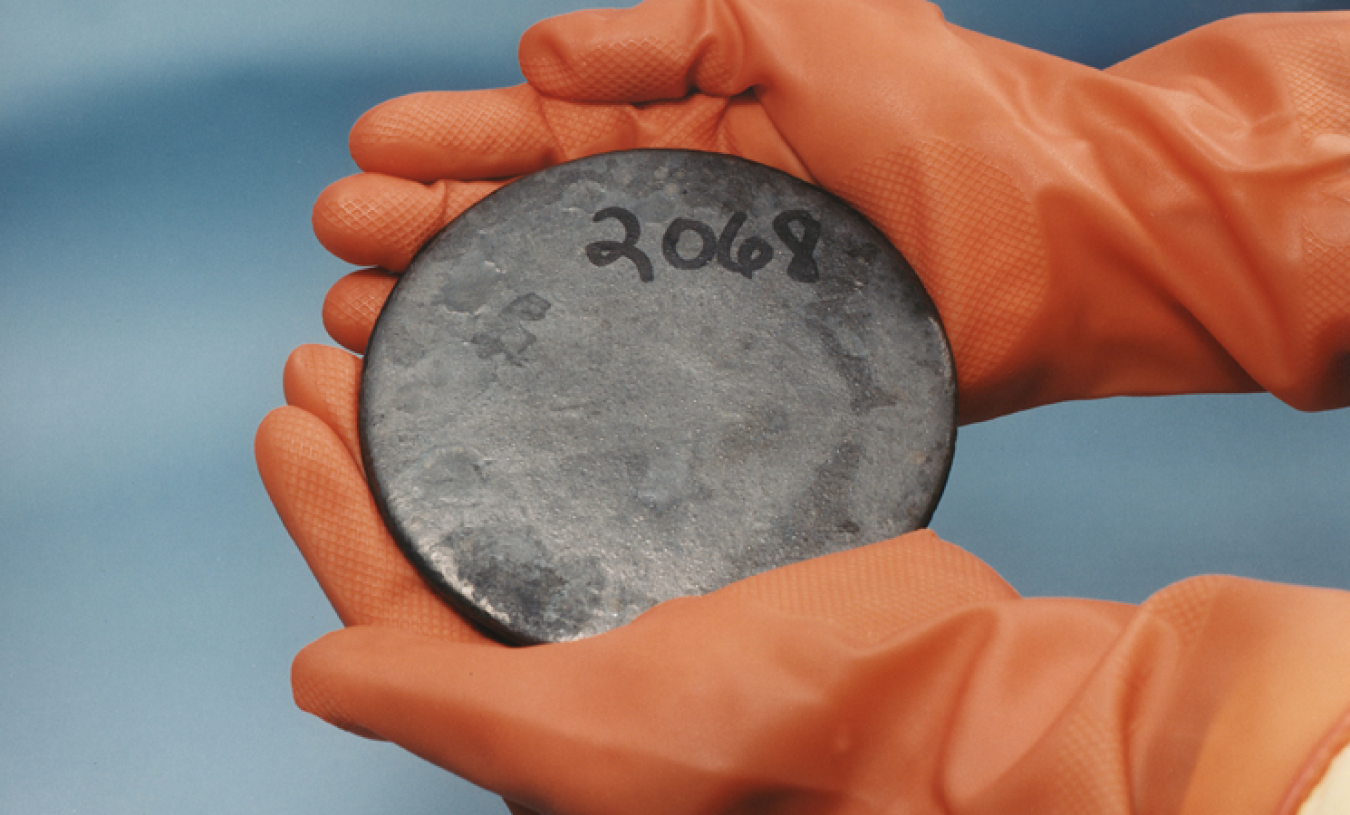
Uranium is a silvery-white metallic chemical element in the periodic table, with atomic number 92. It is assigned the chemical symbol U. A uranium atom has 92 protons and 92 electrons, of which 6 are valence electrons. Uranium has the highest atomic weight of all naturally occurring elements.
Uranium occurs naturally in low concentrations in soil, rock and water, and is commercially extracted from uranium-bearing minerals such as uraninite. Uranium ore can be mined from open pits or underground excavations. The ore can then be crushed and treated at a mill to separate the valuable uranium from the ore. Uranium may also be dissolved directly from the ore deposits in the ground (in-situ leaching) and pumped to the surface. Uranium mined from the earth is stored, handled, and sold as uranium oxide concentrate (U3O8).
Uranium was discovered in 1789 by Martin Klaproth, a German chemist, who isolated an oxide of uranium while analyzing pitchblende samples from the Joachimsthal silver mines in the former Kingdom of Bohemia, located in present-day Czechia. He named his discovery “uran” after the planet Uranus.
For many years, uranium was used primarily as a colorant for ceramic glazes and for tinting in early photography. Its radioactive properties were not recognized until 1866, and its potential for use as an energy source was not manifested until the mid-20th century. Uranium is now used to power commercial nuclear reactors that produce electricity and to produce isotopes used for medical, industrial, and defense purposes around the world.
Links
Nuclear Fuel Cycle
Nuclear Fuel Facts: Uranium
Policy Documents
November 15, 2016
Excess Uranium Management
July 1, 2016
Request for Information - July 2016
May 1, 2015
2015 Secretarial Determination
March 1, 2015
Notice of Issues for Public Comment - March 2015
May 15, 2014
Secretarial Determination of No Adverse Material Impact for Uranium Transfers
Physical Properties of Uranium
- Concentration - Uranium ranks 48th among the most abundant elements found in natural crustal rock. In the Earth’s crust, uranium is found as a mineral, bonded with other elements.
- Density - Uranium metal is very dense. At about 19 grams per cubic centimeter, it is 1.67 times more dense than lead.
Isotopic Properties of Uranium
- Natural Uranium – contains a 238U concentration of 99.27 percent, 235U concentration of 0.711 percent and very little 234U.
- Low Enriched Uranium – contains a 235U concentration between 0.711 percent and 20 percent. Most commercial reactor fuel uses low enriched uranium (LEU) enriched to between 3 percent and 5 percent 235U. Uranium between 3 and 5 percent 235U is sometimes referred to as “reactor-grade uranium.”
- Highly Enriched Uranium – contains a 235U concentration greater than 20 percent. Highly enriched uranium (HEU) is used in naval propulsion reactors, nuclear weapons and in some research reactors.
- Depleted Uranium – contains a 235U concentration of 0.711 percent or less. It is a co-product of the enrichment process.

